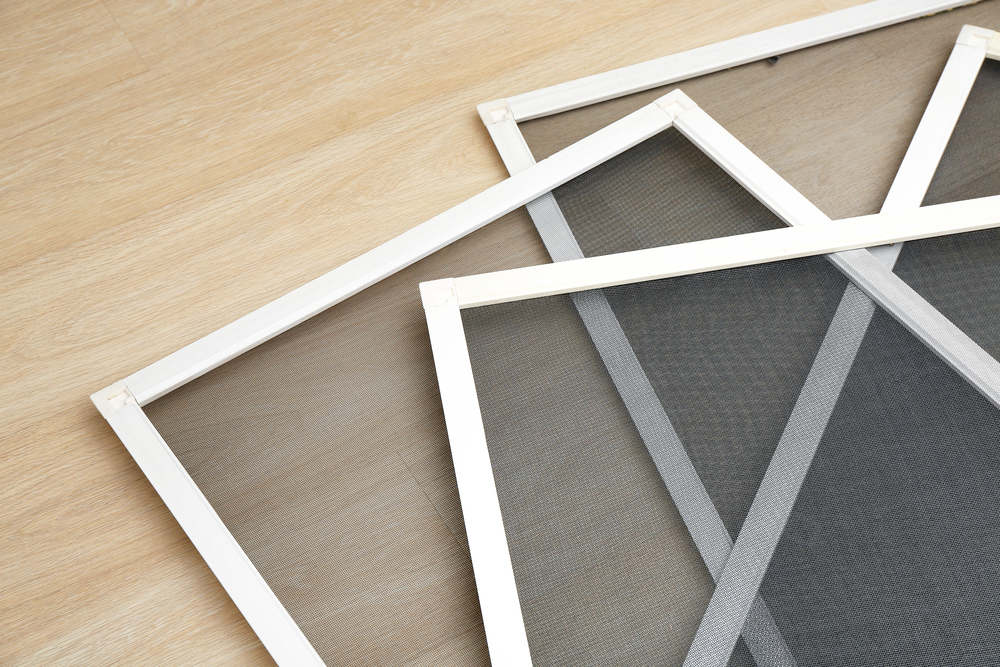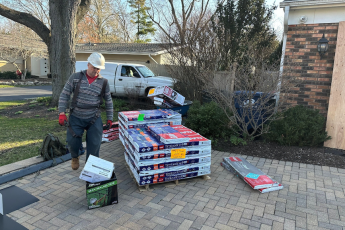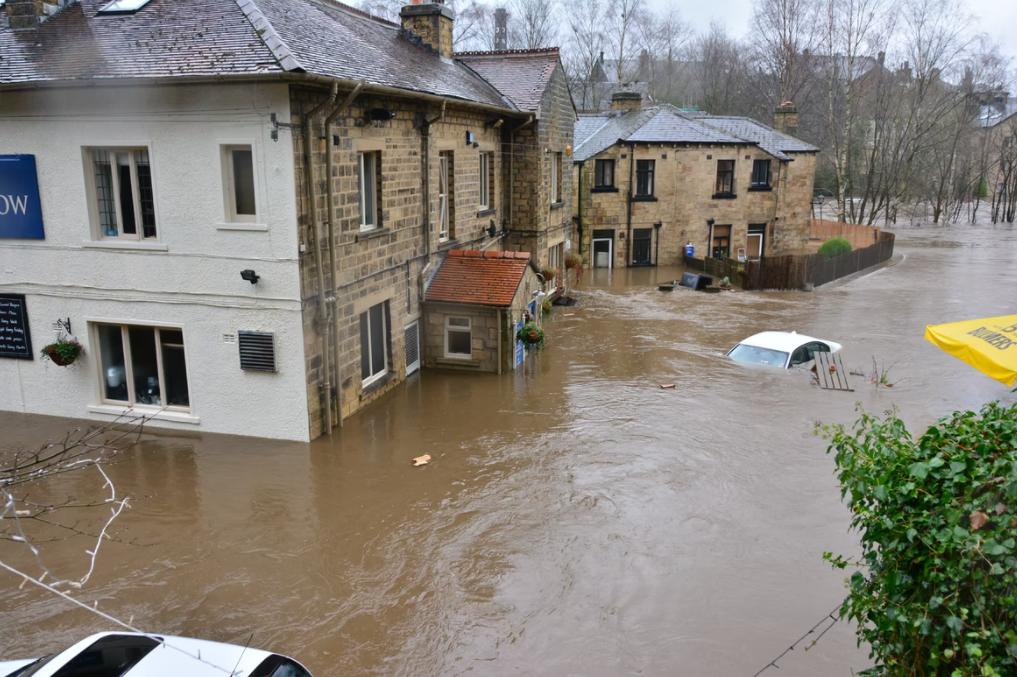7 Popular Pandemic-Inspired Home Repairs

The pandemic has caused chaos in our work and social lives, but there has been one silver lining to mandatory quarantine orders, and that is time!
The increased hours spent at home enable you to investigate all the nooks and crannies that need repairing in your home. If you’ve noticed that your home is a little worse for wear, now is the perfect time to embark on some home repairs.
The quarantine is the ideal time to organize your garage, swap out your ducts for a ductless system, and patch up any small tears in your screen door to keep the bugs from coming in during warmer months. Here are seven popular pandemic-inspired home repair projects for you to undertake.
Source: Africa Studio/Shutterstock.com
1. Patch Screens and Repair Windows
While your windows are closed against the winter chill, check all the screens for rips or wear-and-tear. You’ll thank yourself for your effort, come summer, when you can enjoy a summer breeze with no bugs. Remove the screens and look carefully around the edges for any sprung wires or holes. Screen repair patches are easy to find and easy to apply. You can also replace the entire screen for larger tears by removing the sealing tape and damaged screen from the inside of the window frame. Cut a new piece of mesh ½” wider than the interior frame on each side. Carefully replace the sealing tape and mesh, and then trim any excess with an X-Acto knife.
2. Swap Out Your Hardware
Handles, pulls, and knobs lose their luster, and drawer glides and hinges become squeaky over time, making your kitchen appear run down. A simple way to make your kitchen look like it’s just had a lengthy makeover is to swap out the hardware on your drawers and cabinetry. A screwdriver or cordless power drill is all you need to remove the old hardware and install the new pieces. Ensure you add a little mineral oil or WD40 to new glides and hinges to keep them moving smoothly.
Source: Alex Hariyandi/Shutterstock.com
3. Switch from Ducts to Ductless
A ductless system is a modern heating and cooling approach that saves you space, money, and energy. This system uses an outdoor compressor and indoor units to heat and cool zones in your home with no bulky ductwork, making the most space- and time-efficient HVAC system on the market. Choosing a ductless heating and cooling system over a more traditional one is an investment in your future. Not only does it save you money, but it also increases the resale value of your home. And you can customize your system by choosing which rooms should contain the air handling units, so you won’t pay to heat or cool a rarely used room again.
4. Organize Your Spaces
Closets, attics, basements, and garages could use organizational attention now and again, and quarantine offers ample time to sort these often neglected spaces. With some inexpensive shelving and a handy wall-mounted storage solution, you can create a whole new system in which everything has its place. Stackable boxes, mounted hooks, and a sports rack provide a place for all your storage needs.
5. Install Solar Panels
Spending so much time at home may have you thinking about ways to make your home more energy-efficient. Installing solar panels raises your home’s value, conserves energy, and helps save the environment. Although a solar panel expert is best equipped to plan and install an at-home solar panel, if you’re set on doing it yourself and have the skills to do it, it’s not as difficult as it might seem.
To install solar panels to generate electricity and decrease your carbon footprint, you must design a system that works for your household’s energy needs, buy solar panels and a mounting system from a reputable dealer, and install them. You’ll also need a solar inverter to transform solar energy into electricity.
6. Assess Your Roof
If you ever decide to sell your house, your roof’s condition can be a deal-breaker for potential buyers. A leaking roof not only creates unsightly water stains and breeds mold and mildew but also damages the structural integrity of your home. Leaks happen most often when caulking or flashing has been breached.
If you have a water stain on your ceiling or walls, it’s a sign you have a leak in your roof. After pinpointing where you think it might be, head outside with your binoculars to scan for any curled or missing shingles. You can reattach any curled shingles by coating them with asphalt roofing cement or with a caulk gun. For missing or damaged shingles, you must replace them. Take special care when you’re checking the end caps—the tent-like shingles at the corners of your roof—as they can leak too.
7. Clean Out Your Dryer Ducts
There are two major reasons you should undertake this home repair job: energy efficiency and safety. The most pressing concern about build-up in your dryer vents is the possibility that all the dried-up debris could start a fire in your duct, igniting a larger house fire. This safety concern puts cleaning out your dryer vents at the top of your to-do list.
Your dryer works by pulling moisture out of your clothing and pumping the humid air through a vent into the outside environment. If your dryer is plugged up, then your clothes won’t dry quickly—damp clothes after a full drying cycle indicate a clogged vent. After you get the clothes dryer away from the wall, which is a two-person job, detach the vent duct from the wall and your dryer, and vacuum out the debris as best you can. You can also use a broomstick to dislodge the lint in the tube and expedite the process.
Source: Benjamin Clapp/Shutterstock.com
The Takeaway
Living in a post-pandemic world has allowed us to make the most of our time at home. With all of this domestic downtime, you may have noticed one or two areas about your home that aren’t running as smoothly as they could be. Or maybe you’ve decided to repair and replace elements of your home like the heating and cooling system. Putting some time, effort, and resources into your home can add up to significant benefits later, by saving money and adding to your home’s resale value.











Leave a Comment